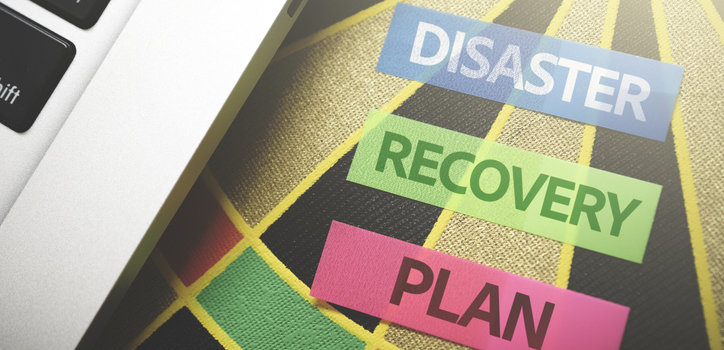Disaster recovery is something you must plan for, but hope never happens. What’s critical in developing a strategy is to have as little disruption as possible. And one of the most important components is your contact center. Your customers need to be able to reach you. If you haven’t considered contact center disaster recovery, we’ve got tips, ideas, and more for you in this guide.
Is a Disaster Inevitable?
Many factors play into outages for businesses. A 2019 study revealed that 96 percent of organizations experienced at least one in the three years prior. There was a wide range of causes, but these three are typically the reason:
Natural disasters can cause it, and there’s no way to defend against the weather. To protect against this, most organizations use redundant facilities in different geographical regions.
Hardware failures are another culprit. If you have an on-premises solution, you have a greater risk for this since you host and maintain the servers. Cloud systems have multiple places to host data to mitigate the chances of this.
The other primary reason is a cyberattack. It is often the one that companies most fear. A 2021 study reported that businesses experienced, on average, 22 down days due to ransomware attacks.
You have control of some of the things that can help you avert disaster. Planning for something that could happen matters. Many of these focus singularly on recovery and not continuance. You should include both. Being able to continue to serve customers with little interruption is a pinnacle for contact center disaster recovery.
What Can a Disaster Cost You?
Depending on the type, such an event could be concerning. A halt of operations has actual and opportunity costs. A 2022 study concluded that an average outage is 78 minutes with a cost of $88,000 per hour.
In addition, if your customers can’t reach you, they may lose trust in you, which could lead to churn. The reputational cost can be even more damaging than financial ones. That’s why your plan needs to include continuance and recovery actions.
Designing Your Contact Center Disaster Recovery Plan
Developing the plan is the first step in protecting your organization. Let’s start with what the plan should include.
How you draft your strategy will depend on your contact center software and where it lives — on-premises or in the cloud. A vital first lesson is that cloud-based contact center platforms are more resilient than on-premises. In this advice, we’ll focus on systems that live in the cloud.
- Identify all emergency scenarios and their impact: Define the biggest risks to business continuity and how they would affect your systems. For example, an ice storm could cause a power outage, which may be brief. But a cyberattack could freeze applications for longer.
- Develop a crisis communication plan: This part of the strategy dictates how you’ll communicate internally and externally should a disaster occur.
- Assign roles for every aspect of recovery and continuance: Many stakeholders will be involved in responding to an emergency, so you want to ensure everyone knows their part.
- Document recovery strategies: You’ll need to address all the steps you must take for immediate action and then full-scale recovery. Again, you’ll need to consider all the different possibilities and exactly how they will impact your contact center operations.
- Train agents, supervisors, and other parties on disaster recovery: Consider making this part of your training curriculum so that it’s not a one-time thing.
- Test your plan regularly and evaluate how you did: You can then make adjustments to improve.
Focusing on Continuance with the Cloud
As noted, you can’t control many of the emergencies that can shut your contact center down. However, you can be as proactive as possible by preparing for continuance. You’ll be more able to do this with cloud-based contact center software. Here’s why:
Cloud applications don’t “go down” if you lose power in your building. Cloud solutions are accessible from anywhere with credentials. If your business has people on-site and remote, it’s not going to affect the latter. Your staff can go to another location, assuming it’s not a city-wide blackout.
Many features offer the ability to keep your contact center up. You can configure new IVR (interactive voice response) flows in the case of a disaster to start. Getting employees to a setting with internet access to deploy the platform is the next critical move. Another safety net is using mobile devices to continue contact center communications.
Work with an industry-leading, reliable provider. When you choose a platform from a company that has considerable redundancy and checks and balances in place, you’ll have protection on the hosting end. You’ll be able to gauge this based on their uptime availability.
Be Ready for Contact Center Disaster Recovery with the Right Solution
The ability to continue and recover your contact center may depend the most on the platform and provider. Our contact center software comes with a 99.999 percent uptime. That’s better than the industry standard. We can provide this because we have a robust and redundant solution. Our security protocols are also best in class with constant threat monitoring.
While you can’t safeguard against every disaster, you can have peace of mind that the technology and the company behind it are reliable and resilient. Learn more about our contact center solution today.
March 15, 2022
Explore other posts on these topics: Contact Center
